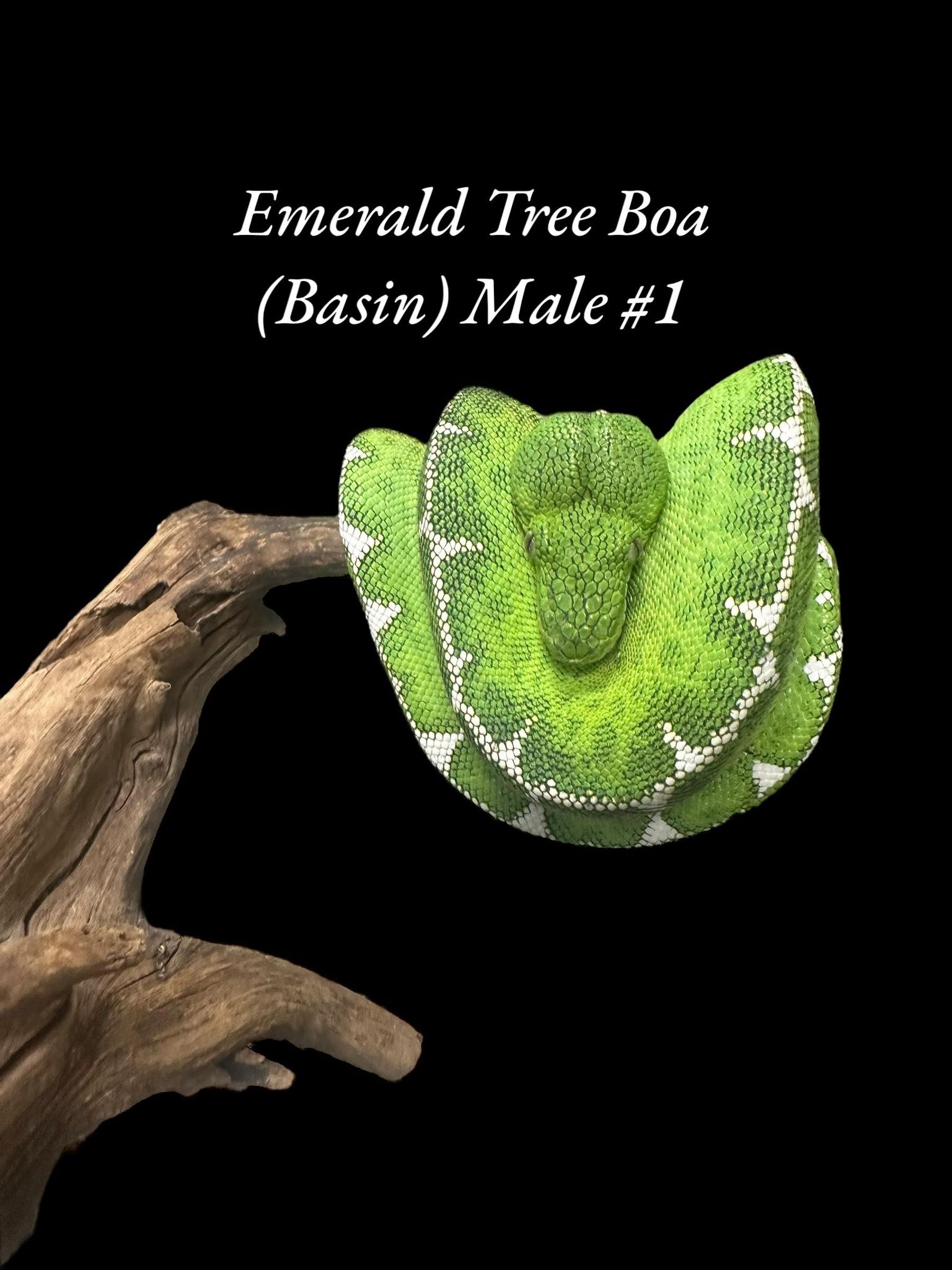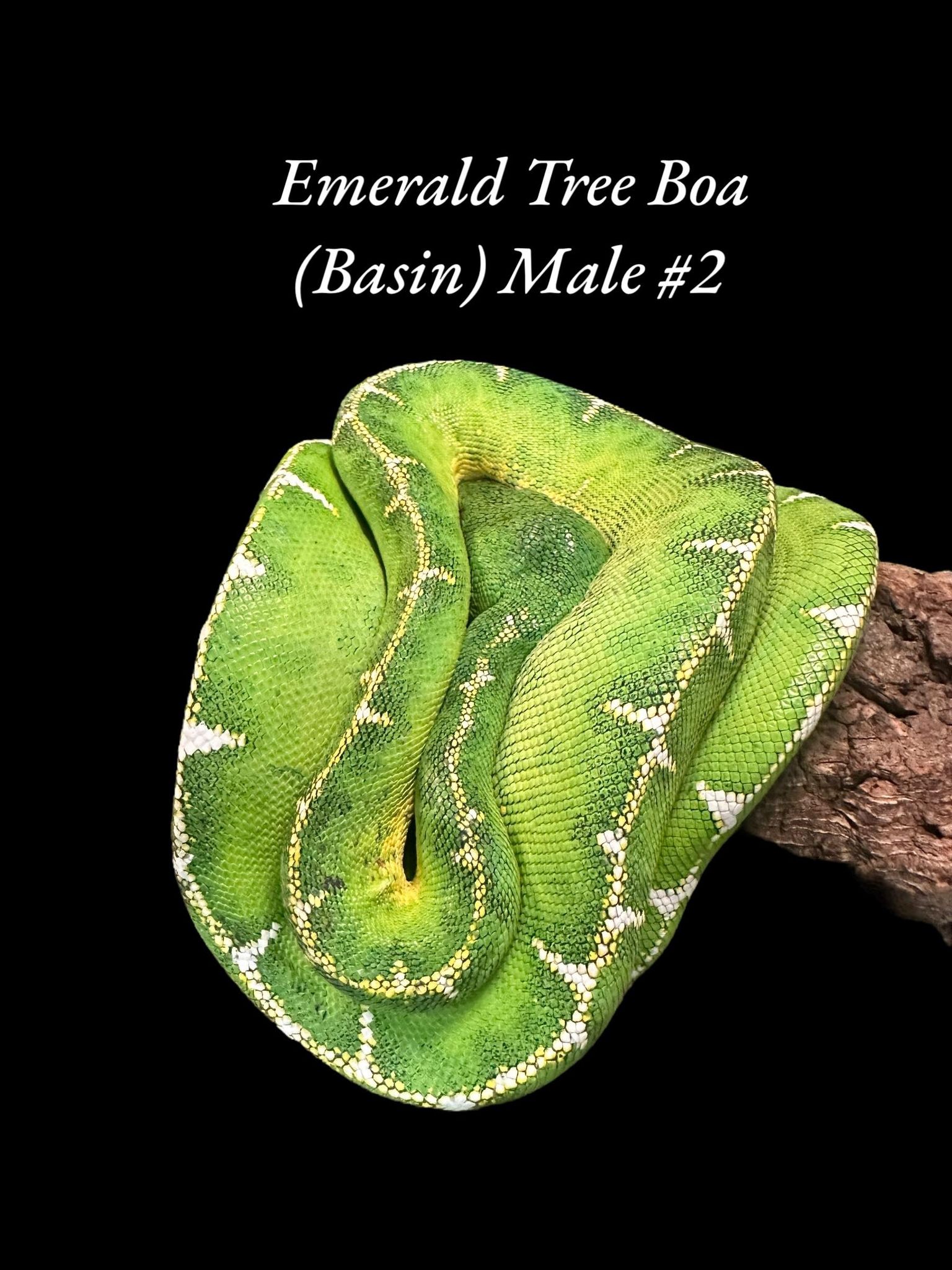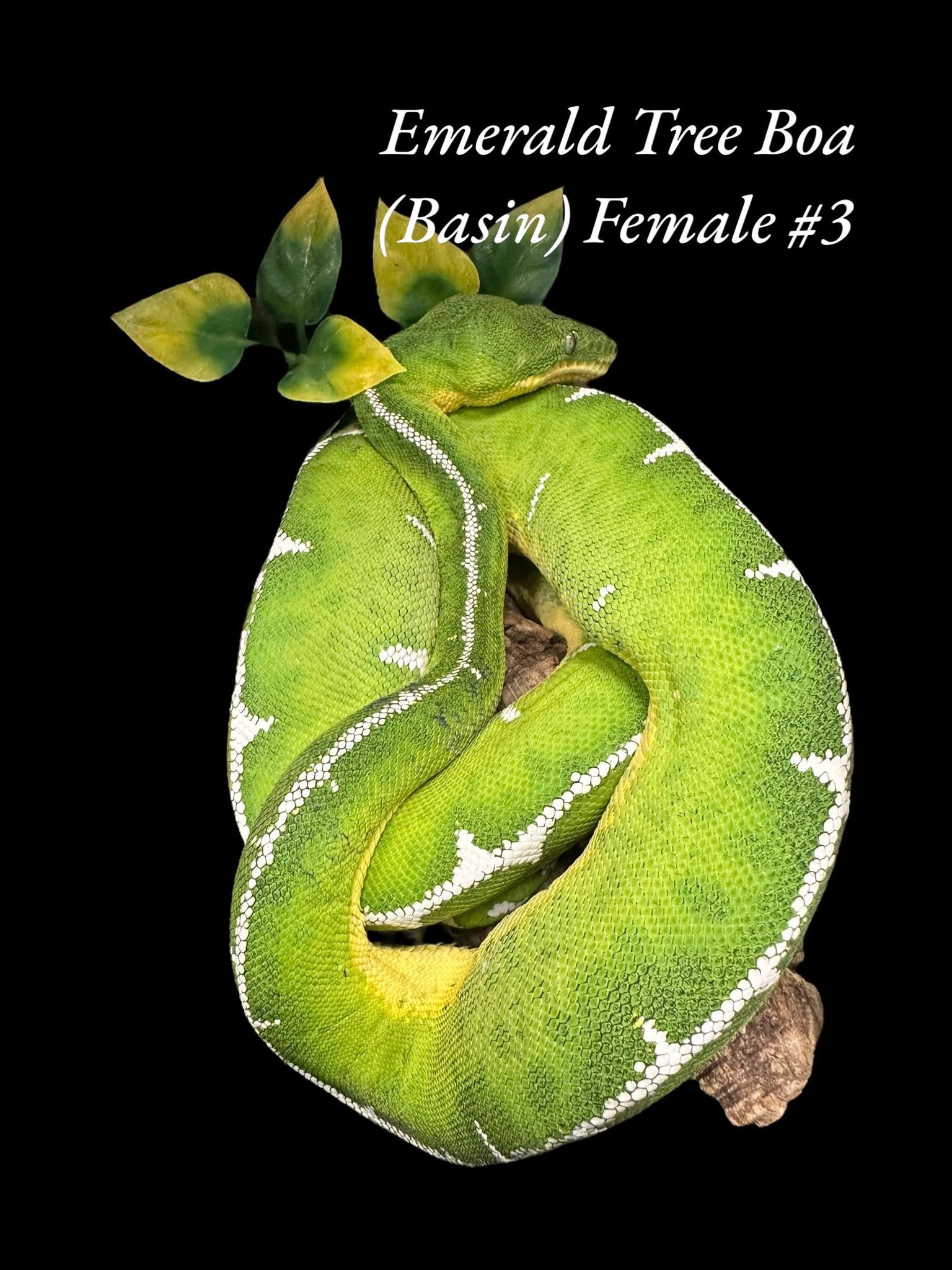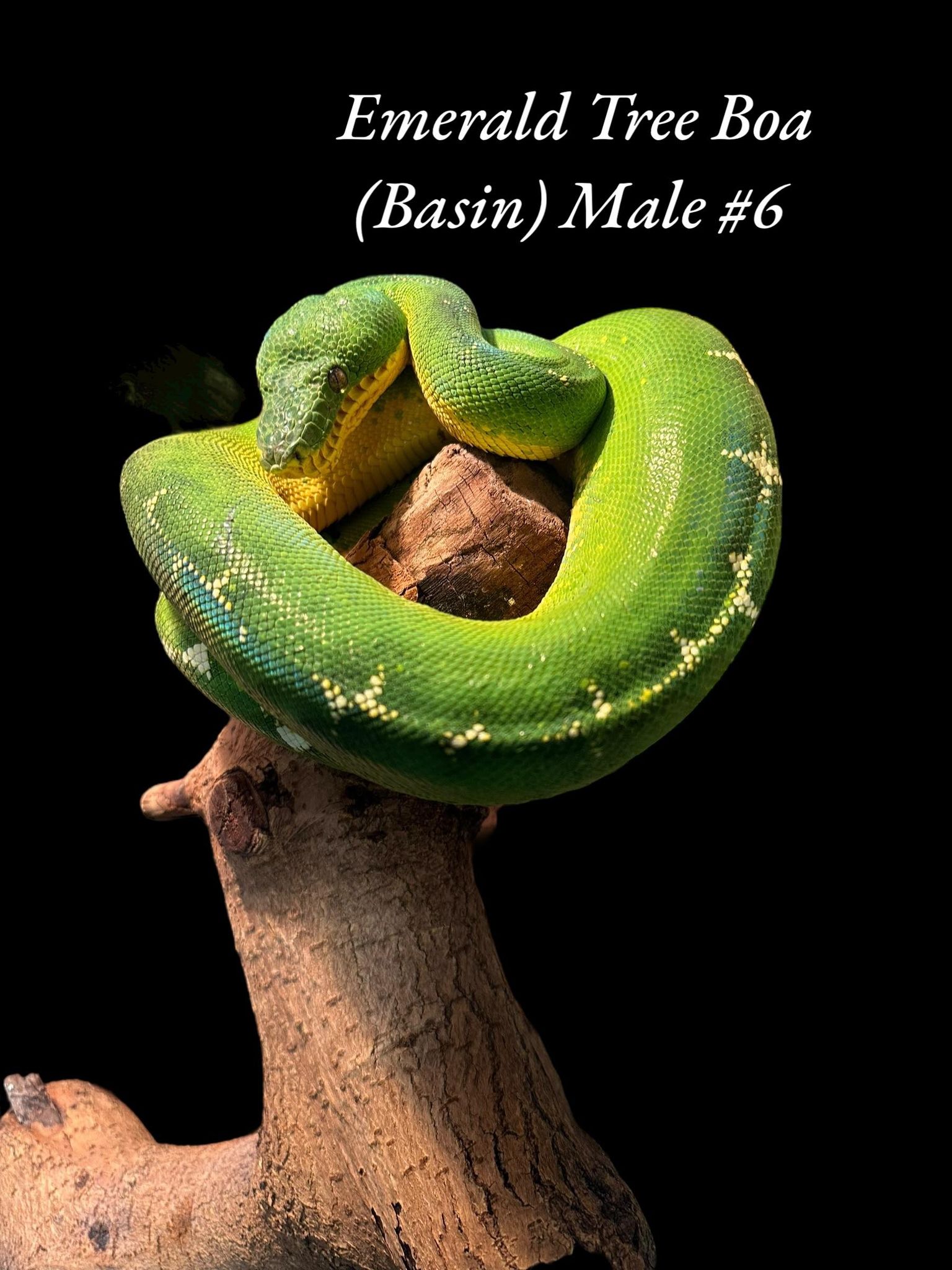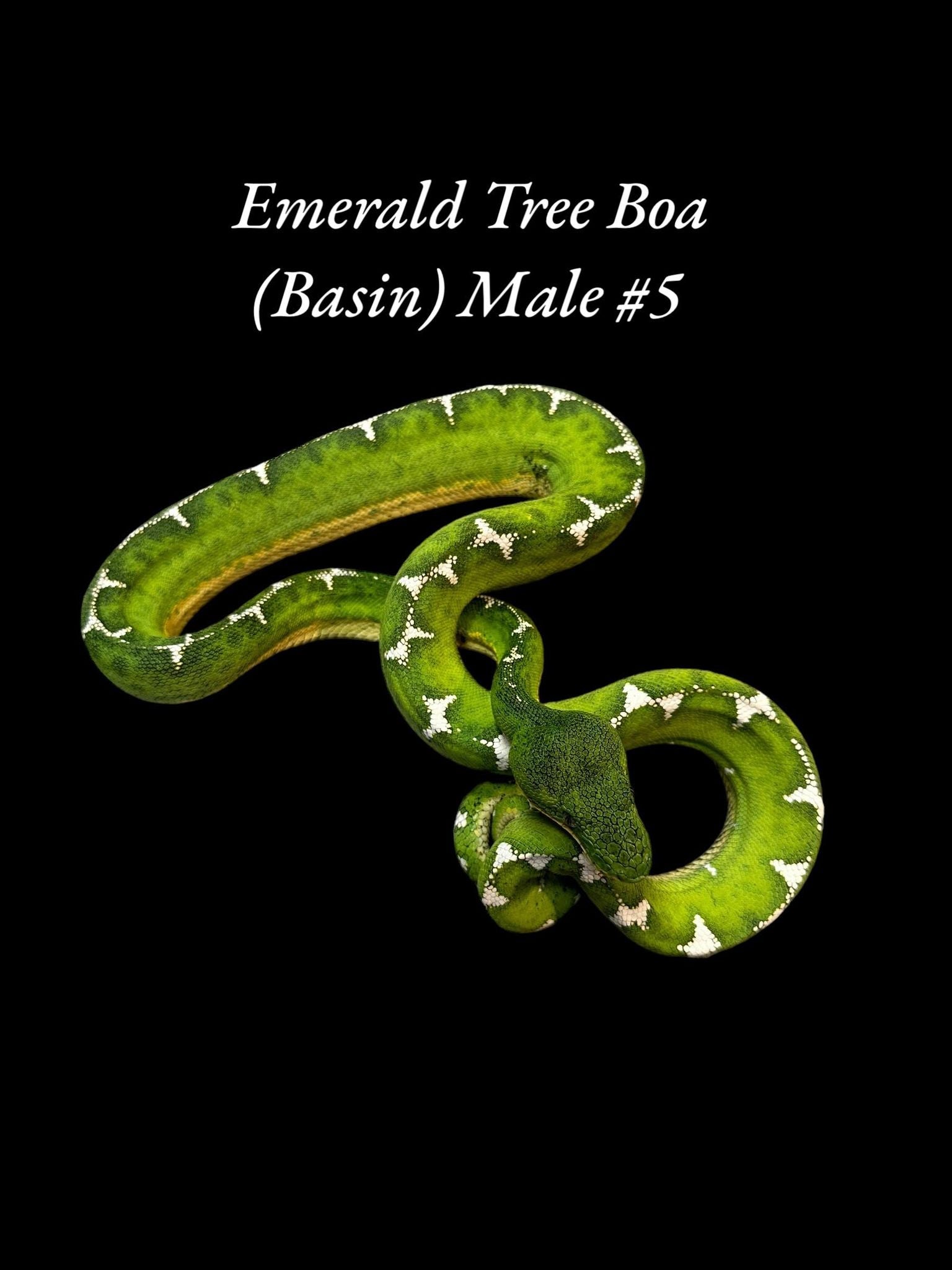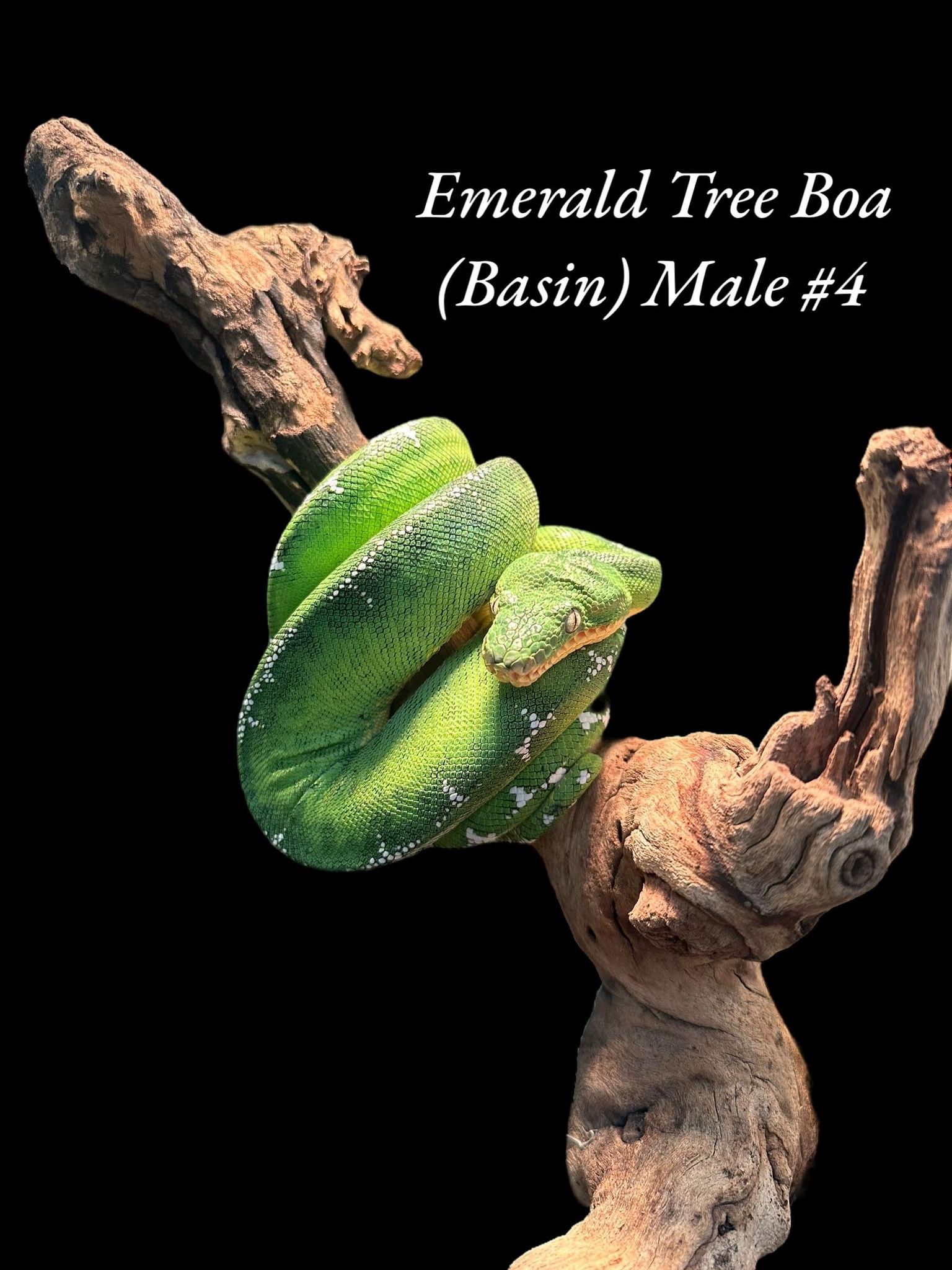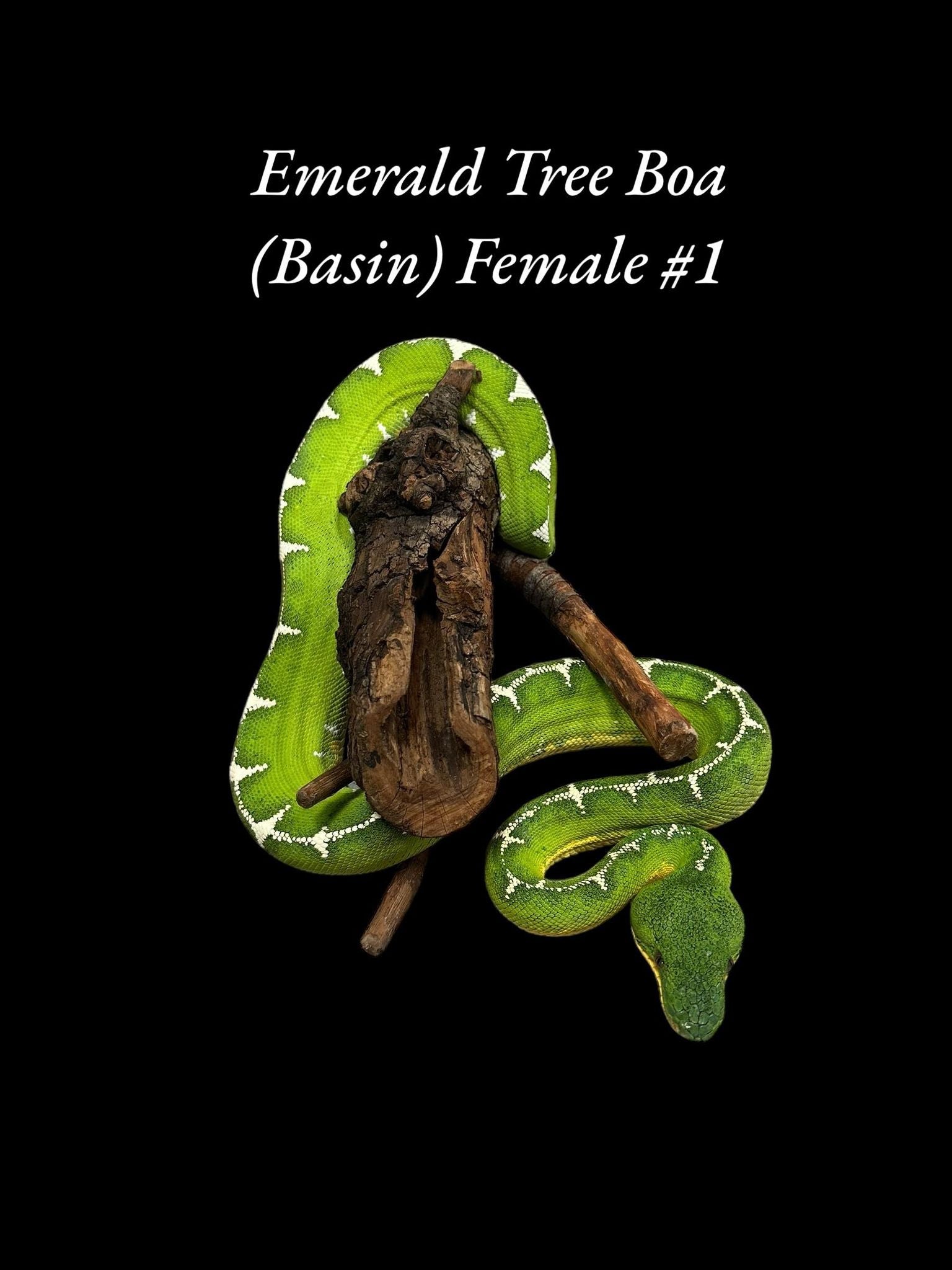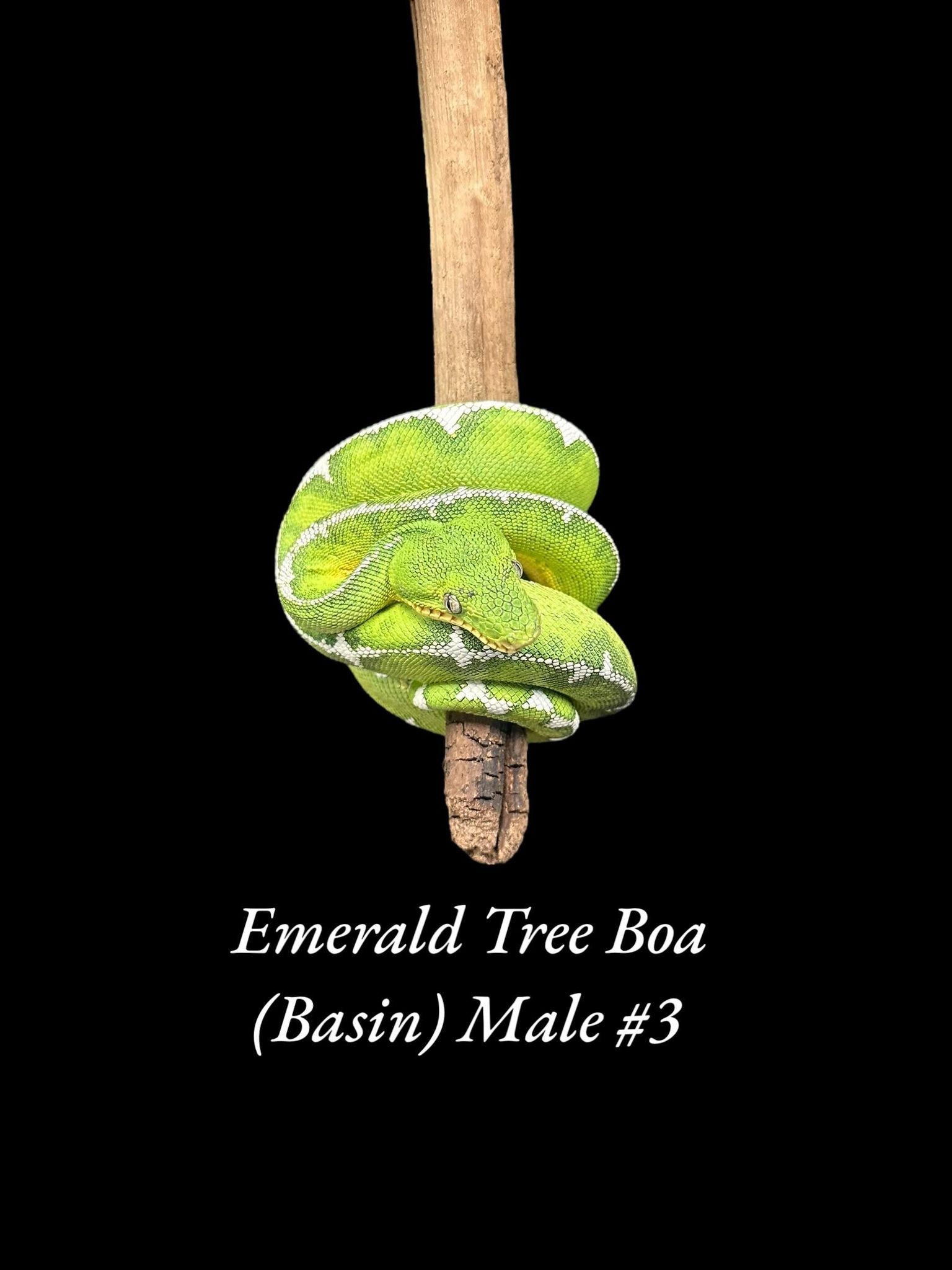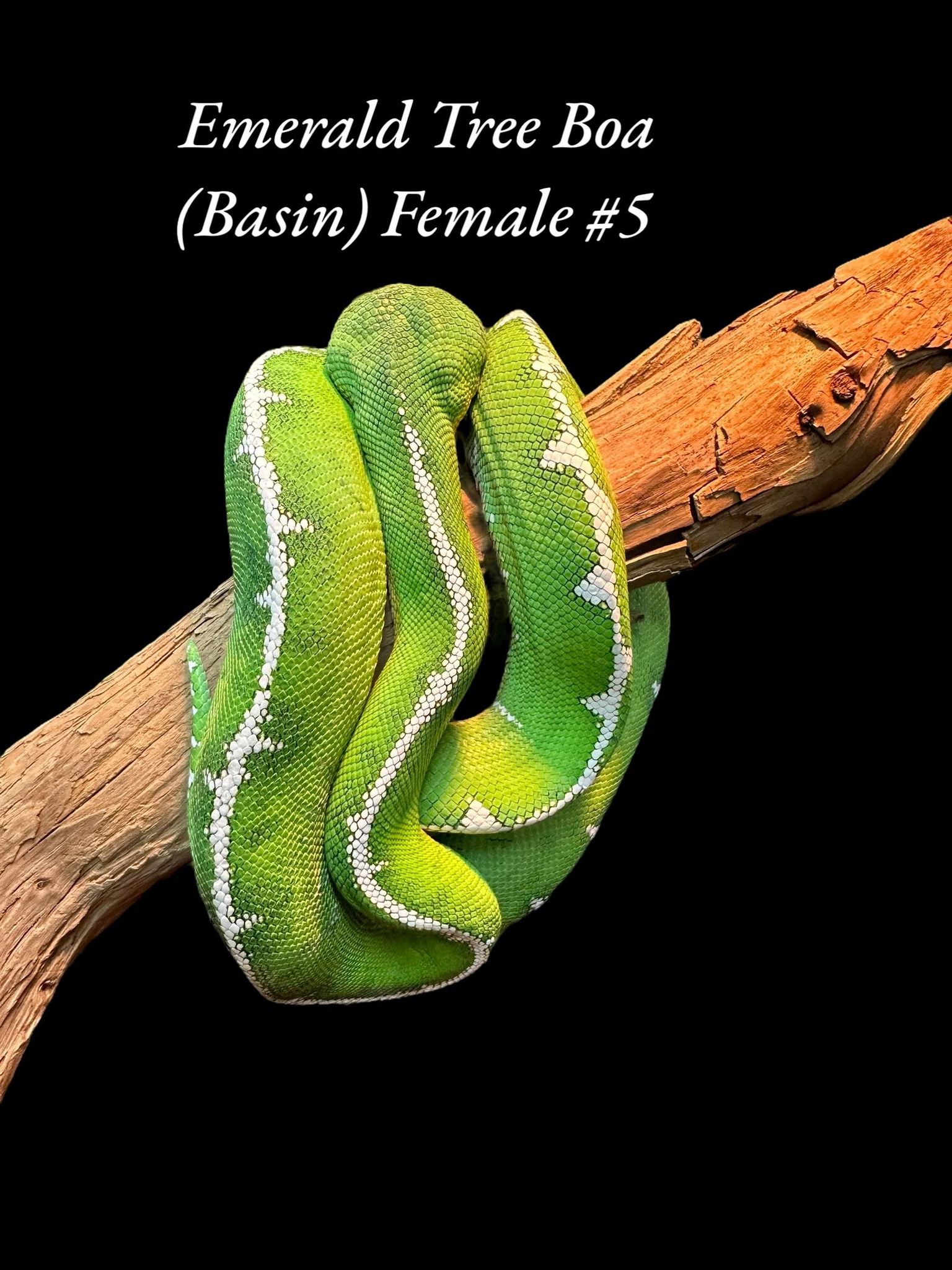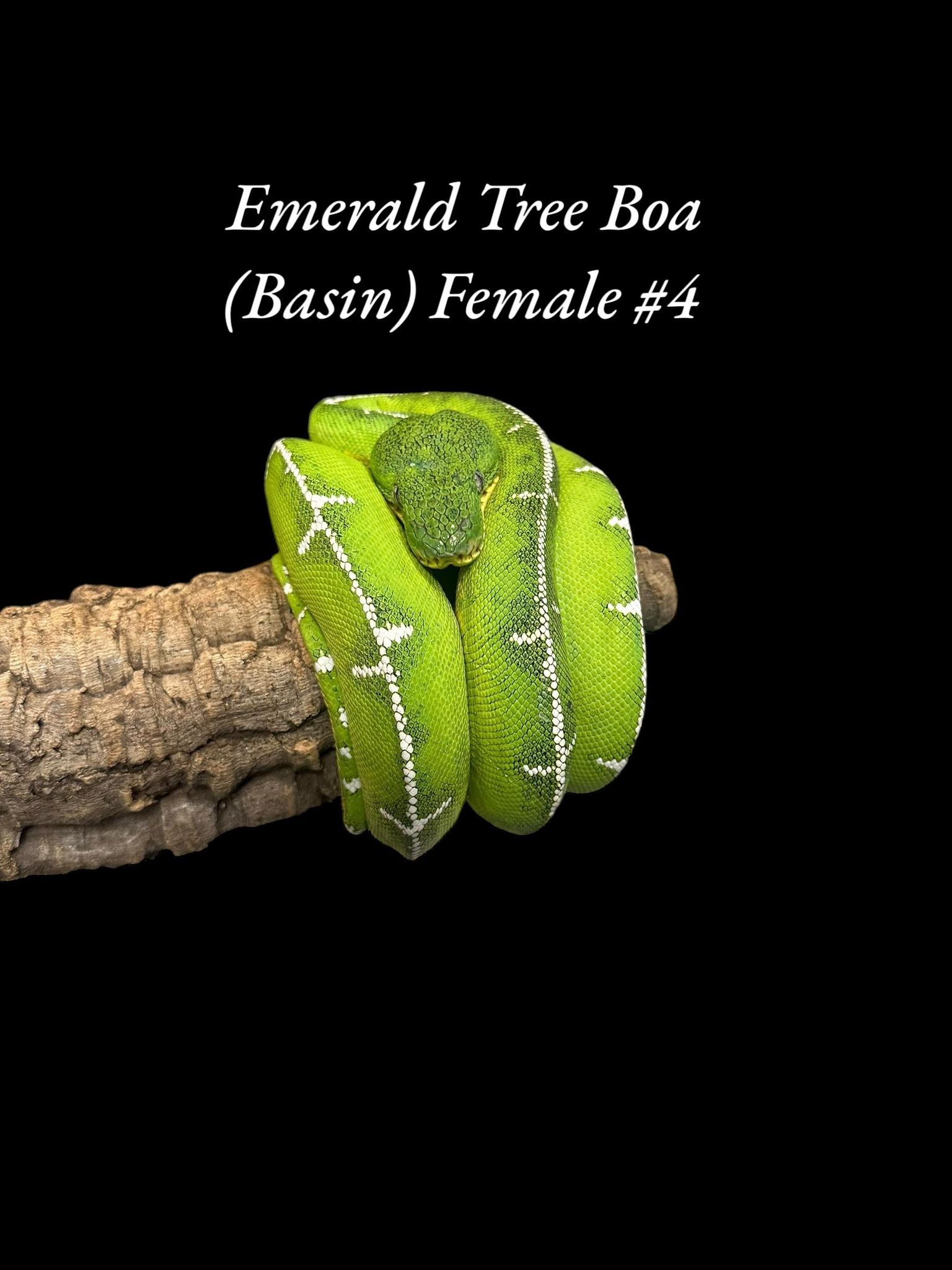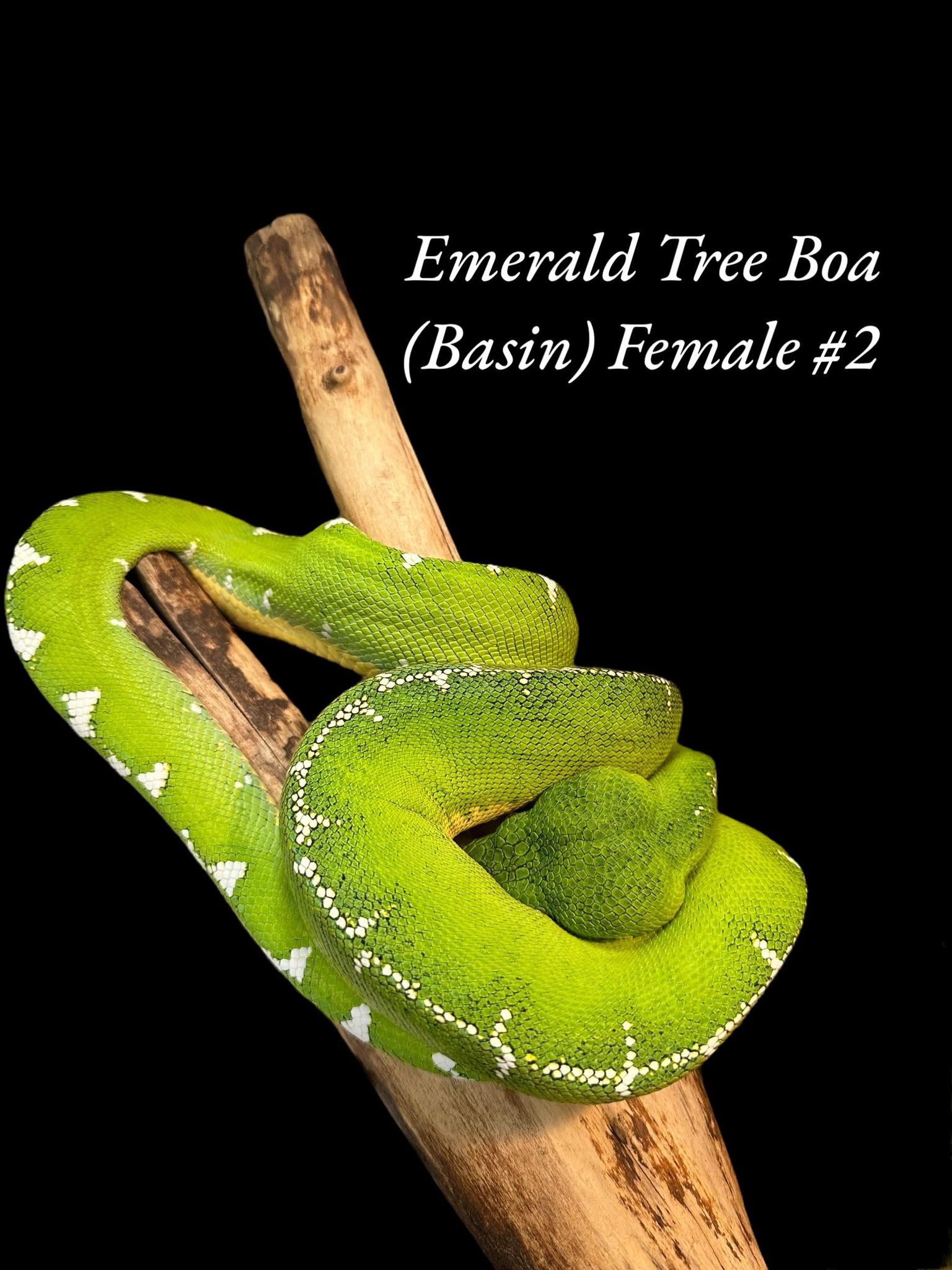Photo Disclaimer
Description
Emerald Tree Boa (Basin Form)
Corallus caninus
Common Name: Basin Emerald Tree Boa
Species Overview
-
Size: Adults typically reach 6–9 feet (1.8–2.7 m), with females often larger and heavier-bodied than males.
-
Appearance: Basin emerald tree boas are easily recognized by their deep emerald-green base coloration and broad, continuous white dorsal stripe running the length of the body. Compared to Northern emerald tree boas, Basin forms are larger, stockier, and more robust, with proportionally larger heads and thicker bodies.
-
Distribution: Native to the Amazon Basin, primarily in Brazil, Peru, Guyana, and Suriname.
-
Habitat: Arboreal, inhabiting lowland rainforests, river edges, and humid jungle canopies, where they rely on camouflage to ambush prey.
-
Behaviour: Strictly arboreal ambush predators, coiled on branches with their head resting in the center. They feed on birds, small mammals, and reptiles. Primarily nocturnal.
Captive Care
-
Enclosure: Vertical space is critical. Provide a tall enclosure (minimum 3–4′ in height) with sturdy perches arranged horizontally at varying heights. A 4′ × 2′ × 3′ enclosure suits most adults, though larger is always better.
-
Temperature & Humidity: Maintain daytime ambient temps of 78–82°F (25–28°C) with a slight basking area of 85–86°F (29–30°C). Nighttime drops to 74–76°F (23–24°C) are recommended. Humidity should remain 70–90%, with frequent misting and strong ventilation to prevent stagnant air.
-
Diet: Juveniles feed on appropriately sized rodents every 10–14 days; adults every 21–28 days. Wild emeralds often feed on birds as well, but in captivity, rodents are the standard.
-
Behaviour in Captivity: Emerald tree boas can be defensive and rely heavily on striking if disturbed. However, with proper husbandry and minimal handling, they thrive in captivity. They are best considered display animals, not frequent-handling snakes.
-
Special Considerations: These boas are highly sensitive to improper humidity and ventilation. Poor balance often leads to scale rot or respiratory infections. A well-ventilated, humid, and naturalistic enclosure is key.
Locality Note
The Basin emerald tree boa is a distinct form of Corallus caninus originating from the Amazon Basin. Compared to Northern emerald tree boas, Basins are larger, heavier-bodied, and more robust, with the signature broad, continuous white dorsal stripe. They are considered highly desirable in the reptile community for both their size and striking appearance.

